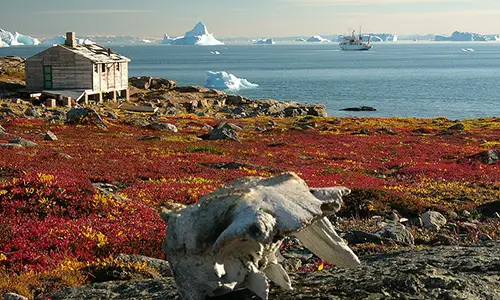1. Cold, Harsh Biomes
Tundra is derived from a Finnish term, ‘tunturi’ which implies treeless. They are some of the harshest and coldest biomes on Earth. They feature treeless ecosystems and are found in mountain tops and in the Arctic regions. Tundra climate is windy and cold with scanty rainfall. The regions are covered by snow most of the year and summers bring bursts of wildflowers.
2. Types of Tundra
Tundra is known for its little precipitation, very low temperatures, short growing seasons and poor nutrients. Dead organic matter creates a nutrient pool with major nutrients being phosphorous and nitrogen. Phosphorous is generated through precipitation while nitrogen is created through biological fixation. There are two types of Tundra, Alpine and Arctic tundra.
3. Location of Arctic Tundra
Arctic tundra is found on the northern hemisphere. It encircles the north-pole and extends south to taiga’s coniferous forests. This tundra is famous for its desert-like conditions and cold. Its soil forms slowly and its frozen subsoil consists finer mineral and gravel.
4. Alpine Tundra
Alpine tundra is found on high altitude on mountains across the world. Growing season on this tundra lasts about 180 days with temperatures at night time falling below freezing points. Soils on alpine tundra are well drained.
5. Animals and Plants in Tundra Regions
Some of the animals that live in tundra and alpine regions include mountain sheep, goats, birds and marmots. These animals feed on insects and low lying plants. Some hardy flora such as cushion plants adopt to the climate on mountain regions by growing between rock depressions where they get sheltered from wind and the temperatures are a bit warm.
6. Temperatures on Arctic Tundra
On average, the temperature on Arctic tundra ranges between -6 and 12 degrees Celsius. This supports various animal species such as Arctic foxes, gray wolves, polar bears, snow geese, caribou and musk oxen. Summer seasons on Arctic Tundra lasts just about 50 to a maximum of 60 days. The sun shines for 24 hours per day in this region during summer.
7. Global Warming on Tundras
The animals and plants found Tundra regions live under harsh conditions and basically cling to life. They are extremely susceptible to environment constraints such as warm temperatures and reducing snow cover due to global warming. Arctic Tundra is experiencing dramatic changes as a result of global warming. Southern animal species such as the red fox has started moving onto the tundra already and is competing for territory and food with the Arctic fox. The lasting impact on the Arctic fox is not known.
8. Arctic’s Permafrost is key to its Ecosystem
Permafrost refers to the layer of frozen dead plants and soil on tundra. It is fundamental in maintaining the unique ecosystem in Arctic region and with the changing global climate, the permafrost is deteriorating. Arctic’s permafrost extends about 1,476 feet under the surface and it is frozen throughout the year.
9. Summers’ Booming Life in Arctic
The surface layer that sits on the permafrost in Arctic’s southern region melts in summer forming shallow lakes and bogs that foster animal life. There are swarms of insects flooding the bogs and millions of migratory birds flock the region to feed on them. More permafrost in southern Arctic is melting due to global warming as well allowing spruce and shrubs to grow on the landscape and altering native animals’ habitat.
10. Melting Permafrost enhancing Global Warming
An estimated 14% of Earth’s carbon is held up in permafrost. Tundra has been serving as carbon sinks that trap huge quantities of carbon from atmosphere through photosynthesis. This helps prevent greenhouse gases from piling in the atmosphere. As permafrost on tundra melts, the dead plant material releases carbon as it decomposes turning tundra from carbon sinks to carbon contributors.









Leave a Reply